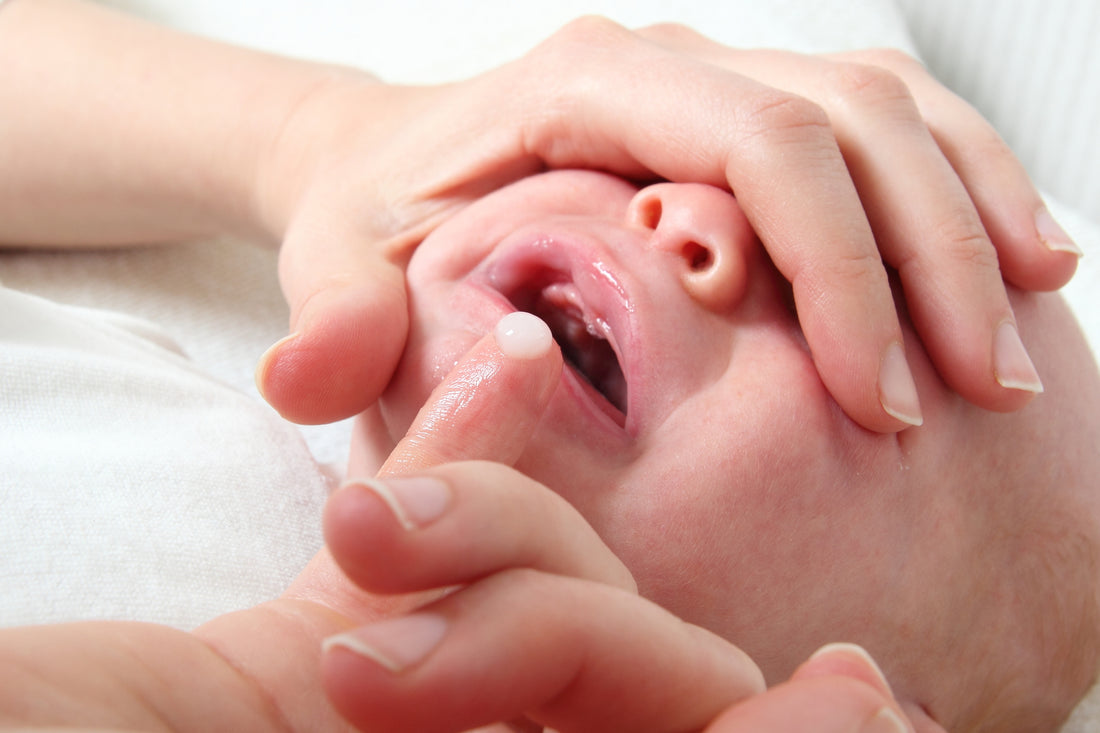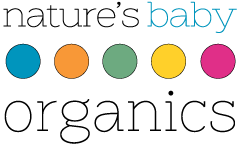
What Is Thrush In Babies?
Share
For new parents, it's important to be aware of the different kinds of infections, illnesses, and diseases that affect babies. Not only will this help you be better prepared, but it will also enable you to spot and treat the illness quickly.
One of the most common infections in babies is thrush. In this article, we'll take a look at oral thrush in babies, its causes, symptoms, duration, and treatment.
Thrush In Babies — Causes and Symptoms

Thrush is a common oral yeast infection that affects babies. It's caused by a type of yeast/dimorphic fungus called Candida albicans; this particular yeast is found in our mouths, stomachs, and vaginas, and when at a normal level it does not cause any issues because it is kept in check by the "good bacteria". However, its overgrowth can lead to oral thrush.
So, what causes thrush in babies?
Babies usually contract thrush when they are just a few months old. This can be due to a number of reasons, such as a weakened immune system, consumption of antibiotics (which kills off the "good bacteria"), and constant contact with poorly dried and overly moist nipples, pacifiers, and baby bottles.
What are the signs of thrush in babies? Symptoms of oral thrush include white patches on the tongue, gums, roof of the mouth, and inside the cheeks, cracked lips, and difficulty feeding.
The yeast might also develop your baby's diaper area — this is known as nappy thrush and leads to shiny red patches of skin on the buttocks, legs, and inside skin folds which might also have small pustules (particularly on the outer borders of the rashes).
If you're breastfeeding your infected baby, you might experience symptoms of nipple thrush (such as sore nipples, pain in the breast, and itchiness).
Thrush in babies (and moms) is usually not considered to be a serious illness, but if your baby is extremely unwell and/or finding it very difficult to feed then it's best to consult a doctor.
Thrush In Babies — Duration and Treatment
Wondering how to get rid of thrush in babies? Thrush (both oral and nappy) can be and is usually treated with antifungal medications. These come in the form of oral suspensions, drops, gels, and creams. Your doctor will be able to advise you on which medication is best for your baby.
In most cases, thrush goes away within two weeks thanks to antifungal treatment. However, it's important to finish the course of medication even if your baby's symptoms seem to have disappeared.
There are also a few natural home remedies that you can try out to treat your baby's thrush. However, you should consult your doctor before trying out any natural remedies. Coconut oil, tea tree oil, and baking soda are some of the natural ingredients you can apply to your baby's thrush patches using a clean cotton swab.
In the meantime, practice good hygiene, both for yourself and your baby. Yeast likes moist places, so make sure your baby is clean and dry at all times. Ensure that your nipples are dried after every feeding. Sterilize your baby's cloth nappies, clothes, pacifiers, bottles, and toys properly.
If your baby has nappy thrush, clean them properly during every nappy change, use gentle and chemical-free baby care products on them, and allow them to have a lot of diaper-free time.
Thrush might be an uncomfortable infection, but it is a mild one. Your baby will soon be back to normal!
To know more about some of the other most common skin issues in babies, check out this article.
